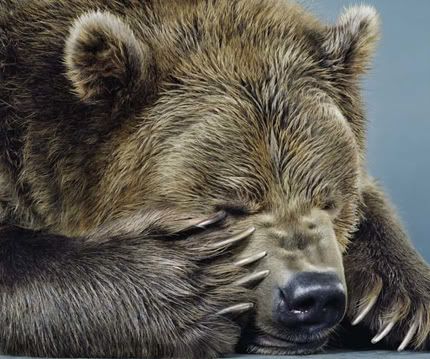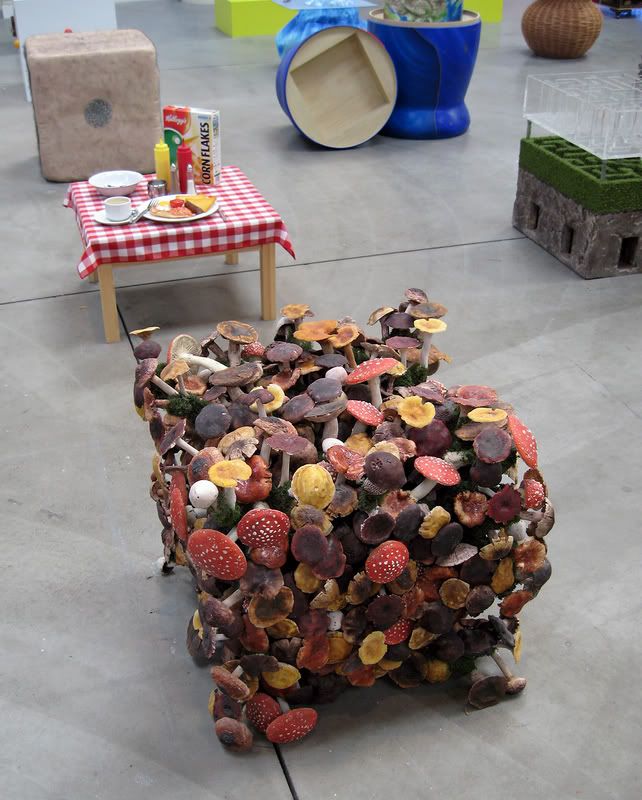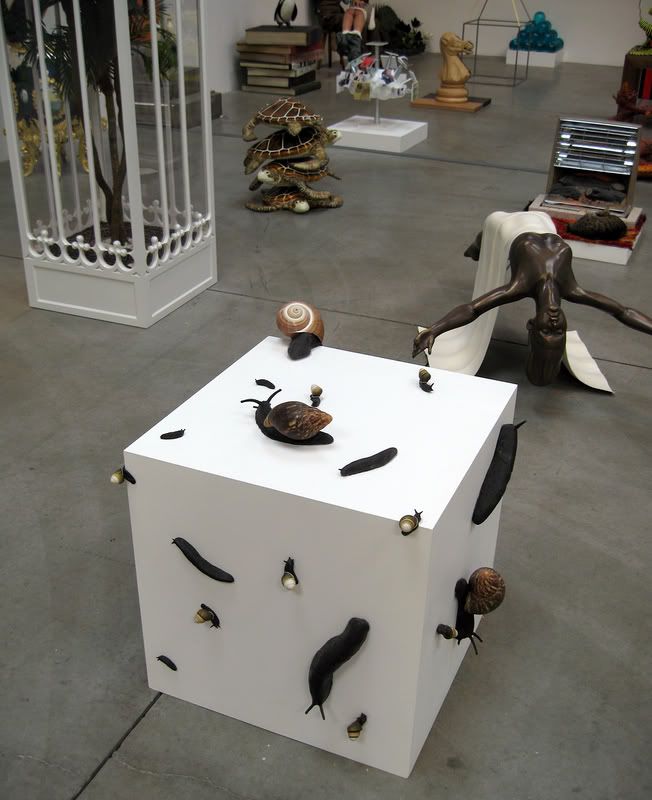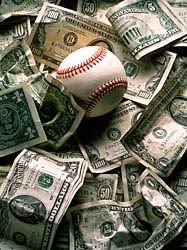Paul Villinski at Morgan Lehman Gallery

Paul Villinksi
"Ardor"
2007
Found aluminum, wire, lead and soot
60 x 60 x 11 inchesMorgan Lehman Gallery:
Paul Villinski's solo outing, "
metamorphosis," proves true the maxim that one can have too much of a good thing. The works Villinski includes - groupings of wall-mounted butterflies, "cut by hand from discarded aluminum cans," and a similar installation using vinyl LPs - are part of a series I was introduced to in July of 2006, when the artist included one sculpture, "
Departure," in a summer group show at Morgan Lehman. At the time,
I applauded Villinski's willingness to flirt with preciousness. I wrote, "[the sculpture] risks being dismissed as a one-note, kitsch celebration of reincarnation or transformation," but concluded that the work was stronger for taking that risk. "Departure" toed the line successfully, forcing the viewer to question his jaded mistrust of a sincere, simple gesture.
Unfortunately, when the gallery space includes only Villinski's butterfly sculptures, the work takes a sad tumble from sincerity into saccharinity. Butterflies, butterflies, everywhere! Even those visitors who rightly cling to the notion of the gallery as a cultural shrine will be forced to admit that an art gallery is first and foremost a boutique. This context undermines Villinski's labors. I left the show wishing I could view each sculpture apart from the rest because, on their own, they are quite nice.
+++++
Julie Heffernan at P.P.O.W. Gallery
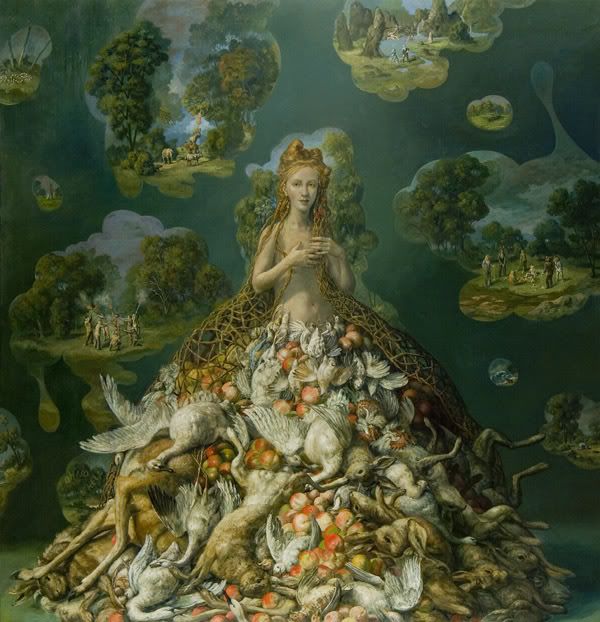
Julie Heffernan
"Self Portrait as Booty"
2007
Oil on canvas
68 1/2 x 65 inchesP.P.O.W.:
Julie Heffernan's large, lush canvases are a treat for contemporary painting aficionados. The works on display in her current solo show, "
Booty," at P.P.O.W., provide ample evidence of her virtuosity, but are psychologically off-putting.
The paintings function as contemporary
Vanitas pictures. Heffernan replaces the oft-used laden table with naked women - all self portraits - and gone, too, are the hourglass and silverware. The works are less meditations on life's temporality than restrained celebrations of ego and excess.
The press release states that the figure "does not stoop under the weight of it all" and possesses "extraordinary grace," but that grace can also be interpreted as ambivalent disregard. Did these women achieve their position, or is this merely their circumstance? In either case, the women are obscene; at best, they are quiet collaborators and, more likely, queenly orchestrators, present-day scepter bearers lording over choked empires and rampant consumption. I am saddened - even made uncomfortable - by these pictures. The artist is looking out at us. We're implicated.
+++++
Daniel Rozin at bitforms gallery

Daniel Rozin
"Weave Mirror"
2007
768 laminated C-ring prints, motors, circuits, custom software and microcontroller
57 x 76 x 8 inches
Edition of 6bitforms gallery:
Daniel Rozin includes three interactive sculptures in "
Fabrication," his third solo exhibition with bitforms gallery. One of these, "Snow Mirror," is relatively forgettable, but "Peg Mirror" and "Weave Mirror" may well prove to be among the most engaging works I will see this year.
As their titles suggest, all three of Rozin's computerized sculptures are unconventional mirrors, limning the viewer in plastic rings, wooden pegs, or digitized "snow." The "reflected" images are fragmented or wraith-like. The reflection offered by "Weave Mirror," for example, more closely resembles a shadow than the familiar face in the medicine cabinet mirror. This "other" shadow has a power that our own, neglected shadow no longer possesses. "The Shadow knows," the
popular 1930s radio program reminded Americans, and "Weave Mirror" emphasizes our corporeality by summoning the confrontational vestige, a hi-contrast Doppelganger that stares back at us as it mimics.

Daniel Rozin
"Weave Mirror"
2007
768 laminated C-ring prints, motors, circuits, custom software and microcontroller
57 x 76 x 8 inches
Edition of 6All of Rozin's "mirrors" are playfully mysterious, but "Weave Mirror" is especially so. I circled the construction, and approached its face from all angles, low and high, trying to figure out its whining, clacking workings. I felt I was in the presence of something special, something at once "new" and ancient, magical and mundane. It is remarkable, too, for the method of its magic. It breaks apart the "whole" to transformative effect: revelation through pixelation.
The back of "Weave Mirror" is a plexiglas panel under which all the gears and wires can be seen. Even though Rozin reveals the mechanics of the piece, you need to be a contemporary tinkerer, engineer, or programmer to understand what's happening behind
Oz's curtain. For the rest of us, the work remains invested with magic, what
Julian Dibbell, writing on contemporary technology, calls "the logic of the incantation." I am, admittedly, something of a technophobe, but Rozin's engineering has all the appeal of
steampunk alternatives.
+++++
Photo credits: Villinski and Heffernan images ripped from gallery websites (only due to time constraints); "Weave Mirror" images, Hungry Hyaena, 2007



